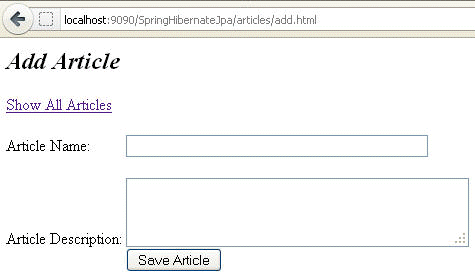



Hibernate is an ORM library that started with its own session management mechanism along with an XML-based approach for configuration it then implemented the JPA specification. JPA is not a library that you can use in your application, rather it is specification for an API for ORM and persistence management with Java. The spring-boot-started-data-jpa provides Spring JPA library and all libraries that it requires. This file, the equivalent of Maven’s pom.xml file lists all libraries required for compiling and packaging our application.

Our application is a Gradle-based project, so we start with adleĬlasspath(":spring-boot-gradle-plugin:$")Īpply plugin: 'io.pendency-management'Ĭompile(':spring-boot-starter-data-jpa') For each of these sub-classes, we will persist two entities to the database, delete one of them and modify the other. In the domain layer, it has one base class which is inherited by two classes. In this article, we will discuss a Gradle-based Spring Boot application that uses Hibernate as its persistence framework to interact with a MySQL database. Gradle Daemon - A long-lived process that keeps build information “hot” in memory.Build Cache - Reuses the build outputs of any other Gradle build with the same inputs, including between machines.Incrementality – Gradle avoids work by tracing input and output of tasks and only running what is necessary, and only processing files that changed when possible.On its website, the documentation lists the top three features that make Gradle faster than Maven: Some of these features help in very high performance of Gradle. With a large number of plugins, it has a rich feature-set that includes incremental builds, parallel download of dependencies, parallel execution of tasks, task output caching, comparing builds, dry runs, and so on. Gradle is a build tool for building, packaging and running applications written in Java (it supports other languages too).


 0 kommentar(er)
0 kommentar(er)
